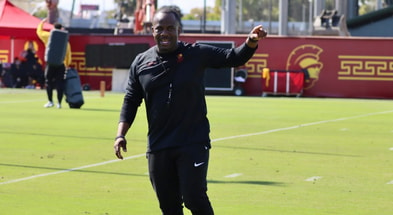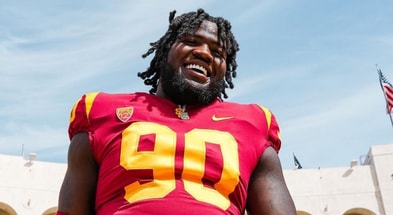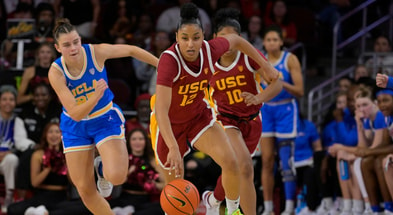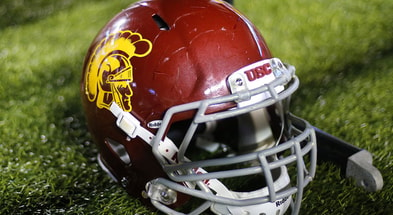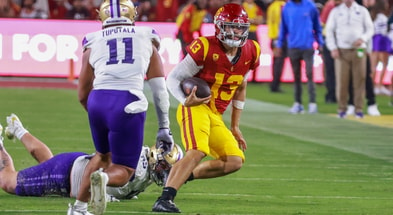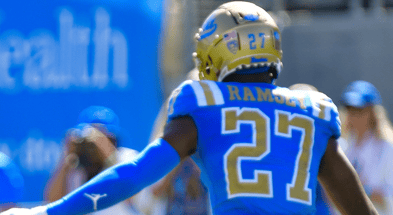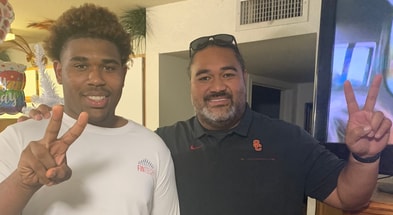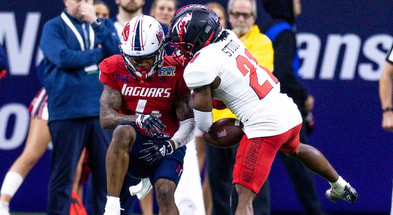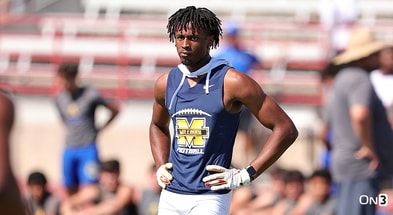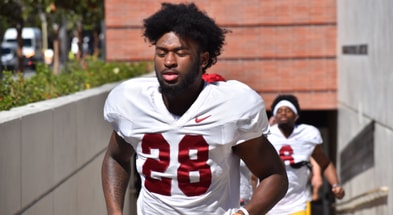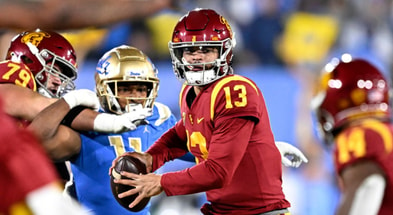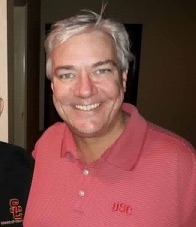College football players make a statement with #WeWantToPlay
Some of college football's biggest stars took to social media Sunday evening with a clear message for anybody who would listen, and specifically those in charge of whether college football takes place this fall. Clemson quarterback Trevor Lawrence, Ohio State quarterback Justin Fields and USC quarterback Kedon Slovis were just a few of the many stars who tweeted the hashtag #WeWantToPlay.
The push is one of several coming from various places, as those looking for a season try to get ahead of a potential announcement this week from the Power 5 conferences that college football this fall will be canceled or delayed until the spring.
For the Pac-12 players sending the message, Slovis included, it came on the back of the #WeAreUnited message from last week, as players pushed for health and safety, social and economic reforms. This statement was largely health and safety related, with one potentially major addition included.
The #WeWantToPlay message read:
"We all want to play football this season.
Establish universal mandated health & safety procedures and protocols to protect college-athletes against Covid-19 among all conferences throughout the NCAA.
Give players the opportunity to opt out and respect their decision.
Guarantee eligibility whether a player chooses to play the season or not.
Use our voices to establish open communication & trust between players and officials; ultimately create a college football players association.
Representative of the players of all Power 5 conferences."
The idea of ultimately creating a college football players association might be a polarizing topic between the athletes and NCAA administrators, but players want a louder voice and that isn't a concept they're likely to give up on at this point.
Stanford defensive lineman Dylan Boles was one of the organizers of the Sunday message. He told ESPN.com's Dan Murphy, "It was a long time coming. It was inevitable. It was just a matter of how quick we could pull it off. We were racing against the clock. We all want to play we just want to do it the right way."
Multiple reports came out Sunday that the Big Ten is likely to announce this week that it will not play this fall. If that happens, reports indicate the Pac-12 could follow and potentially only the SEC would hold out for as long as possible on announcing a delay.
With those reports swirling, the players are looking to step up as a last line of defense for their season, perhaps hoping to delay any impending decisions at least for a while. Though, it should be noted that it goes without saying that every college football player wants to be playing football this fall. Several players have made the decision to opt out of the season already, either to focus on preparing for the 2021 NFL Draft, or out of an abundance of caution with concerns over testing, or unknowns related to potential longterm effects of Covid-19, or any or all of the above.
The Pac-12 and SEC would seem to be in the best position to hold off on announcing a decision, as they don't start their seasons until Sept. 26 (and the Pac-12 could wait until Oct. 10 by shuffling back its opening two games).
Ultimately, the hope is that there can be some firm answers delivered soon, as college football players have lived in limbo basically since the minute spring ball was canceled.
The lack of consistent messaging and planning from the top of college football has been evident throughout, as there has been no unified plan from the NCAA. And while conference leaders have spoken consistently about meeting and working together, none seem to be operating in concert in any meaningful way.
Now, if it is announced this week that the fall season will be postponed, will there be any concrete answers to the questions that players and coaches are sure to have? It seems unlikely. Former USC wide receiver Trevon Sidney, now at Illinois, raised this point on Monday morning.
While "health and safety" have become buzzwords during the discussion of whether or not to go forward with the season, two major aspects that could seemingly play a role in whether or not there can be a season are the idea of creating a bubble for college football players, and liability waivers.
Professional sports leagues have proven that bubbles work--closing off all access points and limiting things to essential personnel only. Universities have been able to copy that a bit this offseason, as most schools have had success with their players returning to campus for voluntary work. USC has had just eight positives in 666 total tests and has reported no positive tests for several weeks in a row. Many Pac-12 schools have seen similar results, though there have been some schools in different parts of the country forced to pause workouts to do Covid-19 spread.
While many players have clearly taken responsibility for limiting their exposure, it becomes far more difficult when the general student population returns to campus or the immediate surrounding area. USC's fraternity row had an outbreak of more than 40 cases a few weeks ago. Of course, the answer to that would be to strengthen the bubble and do everything to completely limit any contact between student-athletes and the student body.
Pac-12 commissioner Larry Scott said recently that creating a bubble for college football wasn't and isn't feasible. I don't know the financials of what it would have taken to house all 12 conference programs, officials, TV crews and all other essential personnel somewhere with enough nearby fields for games and practices for nearly three months, but that's one of the bubbles that could have been created. The other one is simply housing only student-athletes--or football players--on campus at the conference programs in order to limit outside points of contact as best as possible.
The issue, for universities and the NCAA, with bubbles of any kind at this level would seem to be the fact that creating one for student-athletes only is admitting that they are different than the regular student body, which would seemingly be a major point of leverage for college football players who are increasingly looking for more rights, more benefits and a more prominent seat at the table.
The other issue is the liability waivers that many schools had their athletes sign upon returning to campus, though many schools didn't officially call them liability waivers. With the NCAA announcing earlier this month that member schools are prohibited from making student-athletes sign liability waivers exempting institutions from being held accountable for the spread of Covid-19. While it was unknown how much those waivers would actually protect the school if they was eventually challenged, this is another piece of the puzzle schools might need to take into consideration before delivering an ultimate decision on a fall season.
As always, the hope is that we can have college football this fall in a way that keeps everybody comfortable. But these are not small, one-time issues being brought up by student-athletes. And while many certainly seem willing to dive into a football season, we might find out this week if the schools and conferences are as ready to do the same. This was a strong statement from a number of high-profile players put together in a short amount of time. It will be interesting to see if the conferences are willing to take it into account and how much weight it will carry.
